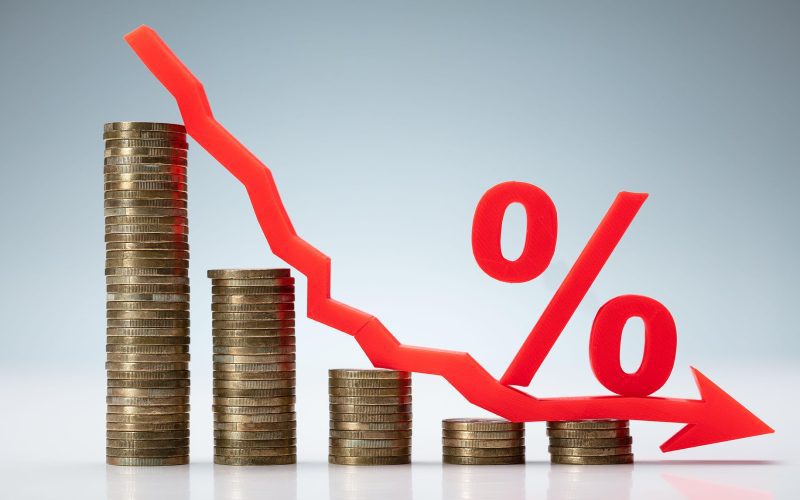Economic uncertainty can create challenges for investors, but it also opens doors to lucrative opportunities for those who know where to look. In this article, we’ll explore top investment avenues that provide stability, growth, and diversification during uncertain economic times.
Understanding Economic Uncertainty
Economic uncertainty arises when markets face unpredictability due to factors such as geopolitical tensions, inflation, or global crises. During these times, investors often experience volatility, which can disrupt traditional investment strategies. However, with the right approach, uncertainty can be leveraged for growth.
Why Diversification Matters
Diversification is the cornerstone of successful investing in uncertain markets. It reduces risk by spreading investments across various asset classes, geographies, and industries. A well-diversified portfolio can mitigate losses in one area while benefiting from growth in others.
Top Investment Opportunities
1. Precious Metals (Gold and Silver)
Gold and silver have been trusted safe havens during economic turmoil. Their value typically rises when markets are volatile, making them reliable stores of wealth.
Advantages:
- Hedge against inflation.
- High liquidity.
- Stable demand globally.
Challenges:
- Lower short-term returns compared to equities.
2. Real Estate Investments
Real estate offers tangible assets that generally appreciate over time. Rental properties and Real Estate Investment Trusts (REITs) are particularly attractive during economic downturns.
Advantages:
- Steady rental income.
- Potential tax benefits.
- Long-term value appreciation.
Challenges:
- Requires substantial initial capital.
- Subject to local market risks.
3. Dividend-Paying Stocks

Stocks of companies with a history of paying dividends can provide consistent income even when markets are unstable. These companies are typically financially stable and less affected by economic shocks.
Advantages:
- Regular cash flow.
- Potential for capital gains.
- Indicates strong financial health of companies.
Challenges:
- Market fluctuations can still impact stock prices.
4. Government Bonds and Treasury Securities
Government bonds are considered low-risk investments, especially during periods of uncertainty. They are backed by the government, ensuring consistent returns.
Advantages:
- Secure and predictable returns.
- Ideal for risk-averse investors.
- Helps balance a portfolio.
Challenges:
- Lower yields compared to equities.
- Sensitive to interest rate changes.
5. Emerging Markets
While investing in emerging markets involves risk, these regions often deliver higher returns in the long run. Industries such as technology, energy, and healthcare in developing countries offer significant potential.
Advantages:
- High growth potential.
- Access to untapped markets.
Challenges:
- Political and economic instability.
- Currency exchange risks.
Analyzing the Opportunities
| Investment Type | Risk Level | Potential Returns | Liquidity | Ideal for |
|---|---|---|---|---|
| Precious Metals | Low | Moderate | High | Conservative investors. |
| Real Estate | Moderate | High | Low to Moderate | Long-term wealth builders. |
| Dividend-Paying Stocks | Moderate | High | High | Income-seeking investors. |
| Government Bonds | Low | Low to Moderate | High | Risk-averse investors. |
| Emerging Markets | High | High | Moderate | Growth-focused investors. |
Comparative Analysis of Investment Opportunities
| Criteria | Precious Metals | Real Estate | Dividend Stocks | Government Bonds | Emerging Markets |
|---|---|---|---|---|---|
| Stability | High | Moderate | Moderate | High | Low |
| Risk | Low | Moderate | Moderate | Low | High |
| Liquidity | High | Moderate | High | High | Moderate |
| Return Potential | Moderate | High | High | Low to Moderate | High |
| Diversification Value | Moderate | High | High | Low | High |
Key Takeaways
- Align with Goals: Choose investments that align with your financial goals, risk tolerance, and time horizon.
- Prioritize Stability: Safe havens like gold and government bonds are ideal during economic volatility.
- Seek Growth: For higher returns, explore emerging markets and dividend-paying stocks.
- Balance Your Portfolio: Diversify to minimize risks and maximize opportunities.
6. Cryptocurrencies as Alternative Investments
Cryptocurrencies have gained immense popularity in recent years, particularly during times of economic uncertainty. While volatile, assets like Bitcoin and Ethereum are often considered a hedge against traditional financial systems.
Advantages:
- High potential for returns.
- Decentralized nature reduces dependency on central banks.
- Increasing acceptance as a legitimate asset class.
Challenges:
- Extremely volatile market.
- Regulatory risks in many countries.
7. Mutual Funds and ETFs
Mutual funds and exchange-traded funds (ETFs) offer diversified exposure to various asset classes, industries, or market indices. These professionally managed funds are an excellent choice for investors seeking simplified portfolio management.
Advantages:
- Broad diversification in a single investment.
- Accessible to investors with lower capital.
- Can be tailored to specific investment themes or sectors.
Challenges:
- Management fees may reduce returns.
- Performance depends on fund management expertise.
8. Defensive Stocks
Defensive stocks, such as those in the utilities, healthcare, and consumer staples sectors, are less affected by economic downturns. These companies provide essential goods and services, ensuring consistent demand regardless of market conditions.
Advantages:
- Stable earnings even in recessions.
- Lower volatility compared to growth stocks.
- Reliable dividends in many cases.
Challenges:
- Limited growth potential compared to other equities.
- May underperform in a strong economy.
9. Technology Sector Investments
The technology sector remains resilient and innovative, even during economic slowdowns. Companies focused on cloud computing, artificial intelligence, and cybersecurity often thrive in uncertain times due to the ongoing demand for digital transformation.
Advantages:
- High growth potential in cutting-edge industries.
- Global demand ensures sustained market relevance.
- Opportunities to invest in market leaders or startups.
Challenges:
- High valuations can pose risks.
- Vulnerability to rapid changes in technology trends.
10. Building an Emergency Fund as an Investment
Although not a traditional investment, having a robust emergency fund is a critical component of financial planning in uncertain times. It provides liquidity and ensures you don’t have to sell long-term investments during a market downturn.
Advantages:
- Immediate access to funds during emergencies.
- Reduces financial stress in uncertain periods.
- Acts as a buffer for unexpected expenses.
Challenges:
- No returns compared to other investments.
- Requires consistent discipline to build and maintain.
These additional strategies further diversify options for investors, addressing both high-risk and low-risk preferences while emphasizing the importance of long-term financial stability.
Exploring Sustainable Investments
Sustainable or ESG (Environmental, Social, and Governance) investments have become increasingly popular during economic uncertainty. Investors are drawn to companies and funds that prioritize ethical practices, renewable energy, and social responsibility. These investments not only align with personal values but also offer long-term growth potential as industries shift towards greener practices. By choosing sustainable options, investors can benefit from robust returns while contributing to global sustainability goals.
The Role of Currency and Forex Investments
Currency trading, or Forex, is another avenue for navigating economic uncertainty. During turbulent times, certain currencies, like the US dollar or Swiss franc, are viewed as safe havens. Forex trading allows investors to capitalize on fluctuations in exchange rates. While it carries significant risk, it can be a profitable option for those with a deep understanding of global economic trends and currency behaviors.
Investing in Innovation-Driven Sectors
Economic uncertainty often fuels innovation as industries adapt to changing environments. Areas like biotechnology, clean energy, and artificial intelligence see substantial investment during such times. These sectors offer unique opportunities for high returns, as breakthroughs in technology and science often drive market growth. Investing in innovation not only has the potential for financial gain but also supports advancements that shape the future.
The Psychological Aspect of Investing
Economic uncertainty can cause emotional reactions that influence investment decisions. Fear of loss may lead to impulsive selling, while the allure of quick profits can drive risky behavior. It is crucial to maintain a disciplined approach and focus on long-term goals. Consulting with financial advisors and sticking to a well-structured investment plan can help mitigate the impact of emotional decision-making, ensuring better outcomes even during volatile times.











